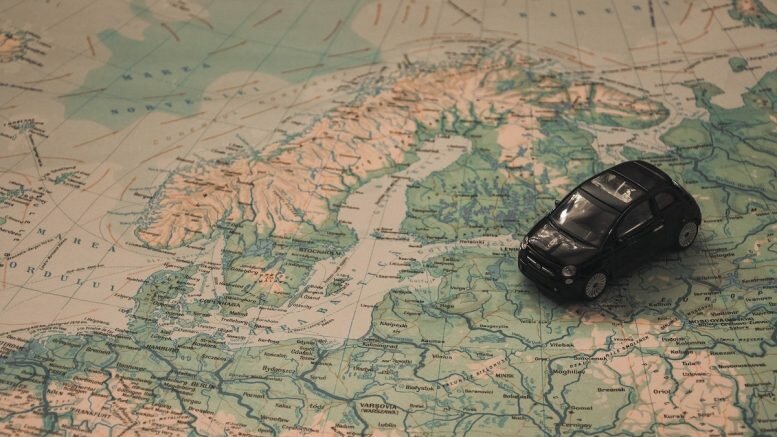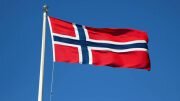Calling all those 100% ready to live in Norway and anyone who might be slightly considering moving to Norway: you’ve come to the right place.
We’ve got you covered with a guide on the key things to know when relocating to Norway.
So you’re set on moving to the land of the ancient Vikings, of the midnight sun, and northern lights, of wild nature, ancient heritage, and of koselig – or maybe the thought has simply crossed your mind. We don’t blame you!
Still, moving to a new city even within the same country is a big decision – not to mention moving to an entirely new country.
It’s essential to be informed and realistic about what to expect when you live in Norway.
Read on for an overview of the relocation information you need if you’re considering moving to Norway.
Life in Norway for a foreigner
The reasons to move to Norway might seem endless. However, one of the biggest draws might be the largely held belief that Norwegians are the happiest people in the world.
The United Nation’s World Happiness Report ranked Norway the 5th happiest country in the world in 2020. The index’s criteria might not accurately define happiness, however.
Six factors are used to create the report: levels of corruption income, freedom, GDP, generosity, life expectancy, and social support. Do you think these are accurate measures of happiness? How would you define it?
The fact of the matter is that Norway does indeed fare well in the six categories researched by the United Nations. So, if these things are important to you (which they likely are), Norway might just be the right place to move.
Remember, though, that happiness means different things to different people. Maybe you’re happy as long as you’re with loved ones. Maybe you’re happy as long as you’re in nature.
Maybe you’re happy as long as the sun is shining (if this last one hits the spot with you – maybe reconsider your relocation, or simply buy a summer home in Norway!)
We’ve got you covered with a complete list of Scandinavian stereotypes to help sort out any false conceptions about the country.
Norway stretches over 385,000 square kilometers and has over 1,000 fjords (especially on its western coast); that’s the most of any country in the world! Its many fjords, two of which are even UNESCO-protected, were carved out over many years by melting and moving glaciers. Those that didn’t move are still found in the country – which means you can actually hike an ancient glacier.
All across Norway, magnificent mountains (the country’s highest mountain is Galdhøpiggen, which stretches 2,469 kilometers above sea level) intertwine with green and rocky valleys, surrounded by an island-dotted coastline that spans around 25,000 kilometers.
Basically, if you love this type of rugged (and totally breathtaking) nature – Norway is here to deliver.
A very secular country, Norway encourages religious freedom across the board. So no matter your faith, Norway has a place in its society for you. Lutheranism is the most represented religion in Norway, followed by Protestantism, Catholicism, and Islam.
However, a large majority of Norwegians (more than half, in fact) aren’t religious or of faith.
Still, living in Norway simply might not be right for everyone – and that’s ok. Realism is key – if you love a brazen, sunny-year-round way of life, then maybe you should reconsider.
It also might be a shock at first. Culture shock and homesickness are normal even if you love your new home.
Moving to Norway from…
Immigration to Norway depends on numerous factors, including where you’re coming from. Anyone wishing to move to Norway must meet a set of requirements – it’s not as simple as packing your bags and booking a flight.
The Norwegian Directorate of Immigration (UDI) is in charge of processing immigration and refugee cases. Therefore, it’s best to check directly with the UDI, government agencies, and embassies for detailed information on how to proceed – as it often and usually varies from a case to case basis.
Europe
Norway is not part of the European Union – but it does have close ties with it. Iceland, Liechtenstein, Norway, and Switzerland actually make up the European Free Trade Association, and Norway is a member of the European Economic Area.
What’s the European Economic Area? It’s made up of all of the members of the European Free Trade Association (save for Switzerland) as well as all of the European Union member countries.
The European Economic Area functions as a single European market governed by the same sets of rules across the board.
The rules guide and enable capital, goods, people, and services to move freely across the member countries. It also aims to establish a competitive but open environment.
In short – this also means that people moving to Norway from the European Economic Area (so that’s Iceland, Liechtenstein, and the entire European Union) will have an easier time being granted entry than those relocating from outside it.
Citizens from the European Economic Area can stay in Norway for up to six months before finding employment – but a job is necessary to remain in the country long-term. A bonus is that self-employment does qualify in Norway, too.
Outside of Europe
If you’re wondering how to migrate to Norway from India, Chile, Australia, or New Zealand, for example, different rules will apply than those for migrants within the European Economic Area.
One thing to keep in mind is that, unlike in some other countries, having Norwegian ancestors or relatives doesn’t mean you’re automatically eligible for citizenship or more likely to get it.
So, though many people’s wish to move to Norway is due to it being the country of their ancestral roots, this reason won’t help here.
The closest you can get to family-related immigration to Norway is obtaining a work permit with the option to bring your partner and children with you to the country.
Basically, in most cases, you’ll have to have a job secured in Norway in order to move to it from outside of the European Economic Area.
You’ll also need to have a work permit, as well as meet certain salary level requirements.
Though the Norwegian economy is prosperous on a worldwide scale, jobs aren’t infinite – though they are plenty.
Which brings us to…
Economy and jobs in Norway
Norway does consistently top the highest standard of living lists across the world. It has one of the world’s highest gross national incomes per capita – at $68,059.
This also makes it one of the most expensive countries to live in. For one, it has high taxes.
And it’s not just taxation that makes living in Norway expensive. A study for 2020 ranked Norway 2nd in terms of living costs out of all the countries in the world. Factors used during the research were the cost of living, eating out, groceries, purchasing power, and rent.
Norway’s economy is, in large part, focused on the oil and gas industries, which account for its most significant exports. However, it’s also centered around fishing, in part, and a booming tourism industry to boot.
So, many jobs are focused on precisely those categories – though many research jobs are prevalent too. These tend to be more temporary, though.
Along with that, the construction, consulting, ICT, and healthcare industries also might have job openings available.
Generally, Norwegian salaries are higher than other countries’ averages. What, then, do high salaries mixed with high costs of living mean? In Norway, this combination makes for a sizeable middle-to-upper-middle class.
In a typical Scandinavian family, both parents usually have to work to accommodate the high living costs (including taxes and high prices of goods and services).
The primary public holidays in Norway are Easter (the Sunday following the Paschal Full Moon), Christmas (December 25), and Constitution Day (May 17). Norway also has comparably longer vacation days and parental leave days than other countries.
The official currency in Norway is the Norwegian Kroner, but the Norwegian society is highly digital. This means that many Norwegians don’t even carry cash around (which might be the norm where you’re moving from) and instead pay for all transactions – no matter how small – with a card.
If you’re planning on moving to Norway to study – well, first of all, good choice – tuition is free here! This might not come as a surprise to some countries, but it’s quite a difference from the US (where a year’s tuition can cost around $60,000).
Second, maybe you’re wondering in which language classes will be taught (or whether you can get a job in Norway without knowing Norwegian).
Which brings us to…
Languages in Norway
Norway has two official languages: Norwegian and North Sámi. The most spoken language is Norwegian (also known as Norsk), and it’s Norway’s national language. Norsk is used by around 5.2 million people (that’s again, out of a population of 5.4 million) in the country.
You don’t need to know Norwegian to get by in Norway. But it is advisable, because it’ll open more job opportunities for you – plus, it could be fun.
If you’re looking for citizenship or permanent residence, the role of language knowledge becomes more important. In that case, you’ll have to know a certain level of Norwegian to pass certain tests.
You’re ahead of the game if you already know Swedish or Danish – as these languages are most closely tied to Norwegian; all being part of the North Germanic branch of the Indo-European language family.
Many, if not most, Norwegians are fluent in English, too. Many jobs and workspaces are international, and English can be spoken in offices.
In fact, English (also known as Engelsk) is spoken by almost 4,350,000 people in Norway – many of which are fluent.
English is taught in Norway from primary school but is also used and learned through pop culture outlets.
There are also a number of university degree programs available in English. For further information, check directly with the university you’re interested in.
There are many Norwegian language learning programs as well; for more information, check here.
You can also check out our complete guide to languages in Norway here.
Where to live in Norway
Norway’s population is almost 5.4 million, but most of its inhabitants, in fact, live in the country’s southernmost regions where its major cities are located. Oslo is the capital of Norway and is home to almost 600,000 citizens, while Bergen is home to nearly 300,000.
Further north is Trondheim, home to almost 200,000 people, and Tromsø, home to nearly 75,000. As you get further north – the population gets more sparse, so take this into consideration when choosing where you’d like to live.
If you do have freedom of movement and aren’t tied to relocating to a specific city in Norway, keep in mind that the country’s climate also varies. The higher north you get, the rougher the terrain, and the colder the climate. Still wondering why most of the population is centered around the south?
To give you a few examples:
- In Oslo, July temperatures average between 13 and 22 degrees Celsius and January temperatures average between -5 and 0 degrees Celsius
- In Tromsø, July temperatures average between 9 and 16 degrees Celsius and January temperatures between -6 and -1 degrees Celsius
A bonus (or additional bonus if you’re a cold-weather person) of living in Norway outside of the big, southern cities is that housing costs will be less expensive.
If you’re studying in Norway, your location might depend on the university you choose to attend. Oslo, Alesund, Bergen, Stavanger, and Trondheim are all buzzing-with-student-life university cities (by the way, so is Tromso – if you’re not afraid to brave the even colder cold).
Our biggest recommendation: visit the country before moving there. Connect with locals and connect with expats – as many as possible. This is the way you’ll get at least a feel for the country you’re soon moving to – or considering relocating to.
Velkommen til Norge! And remember to stay informed.
Source: Norway Today, #NorwayTodayTravel
Do you have a news tip for Norway Today? We want to hear it. Get in touch at [email protected]






Leave a comment